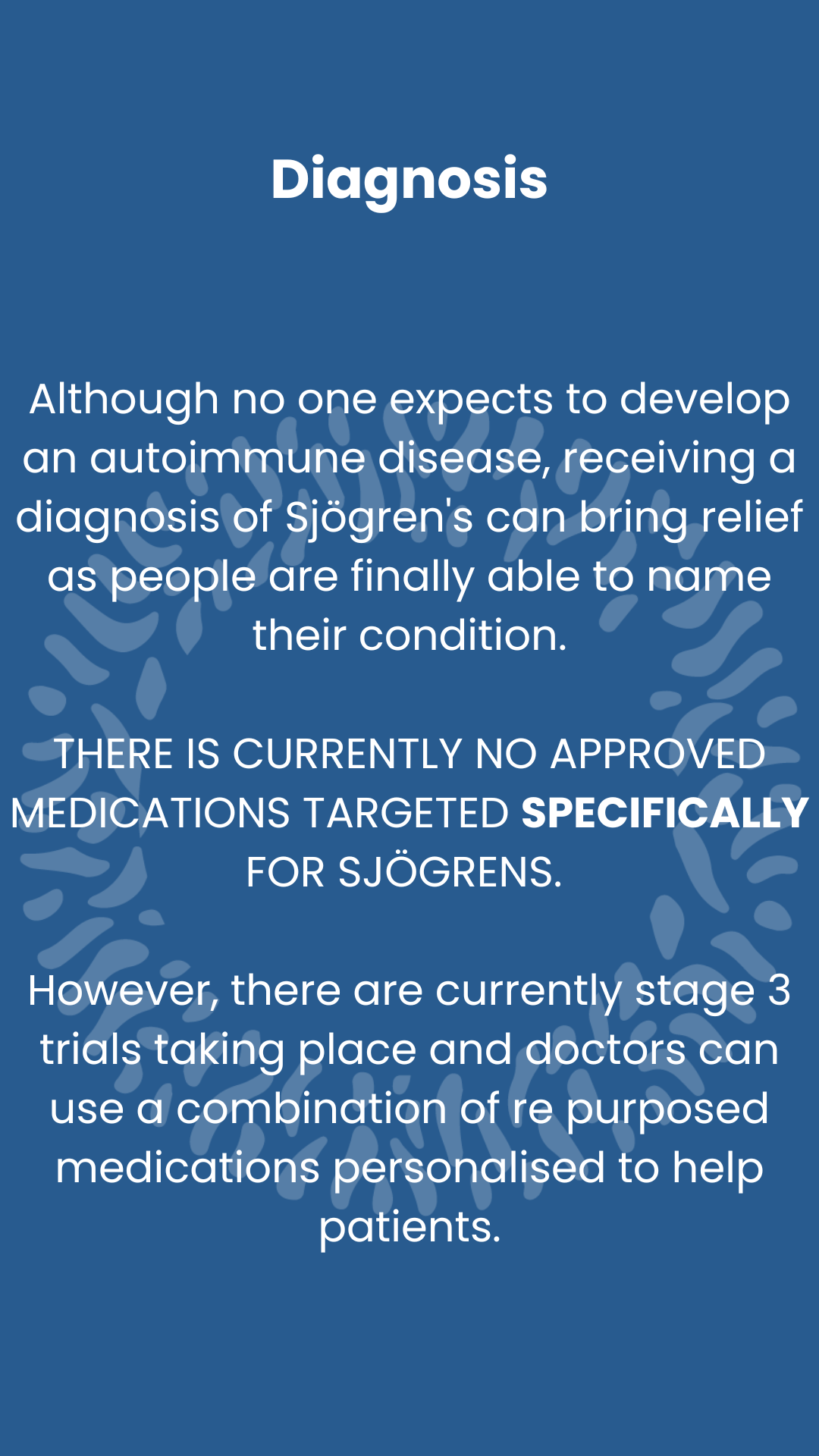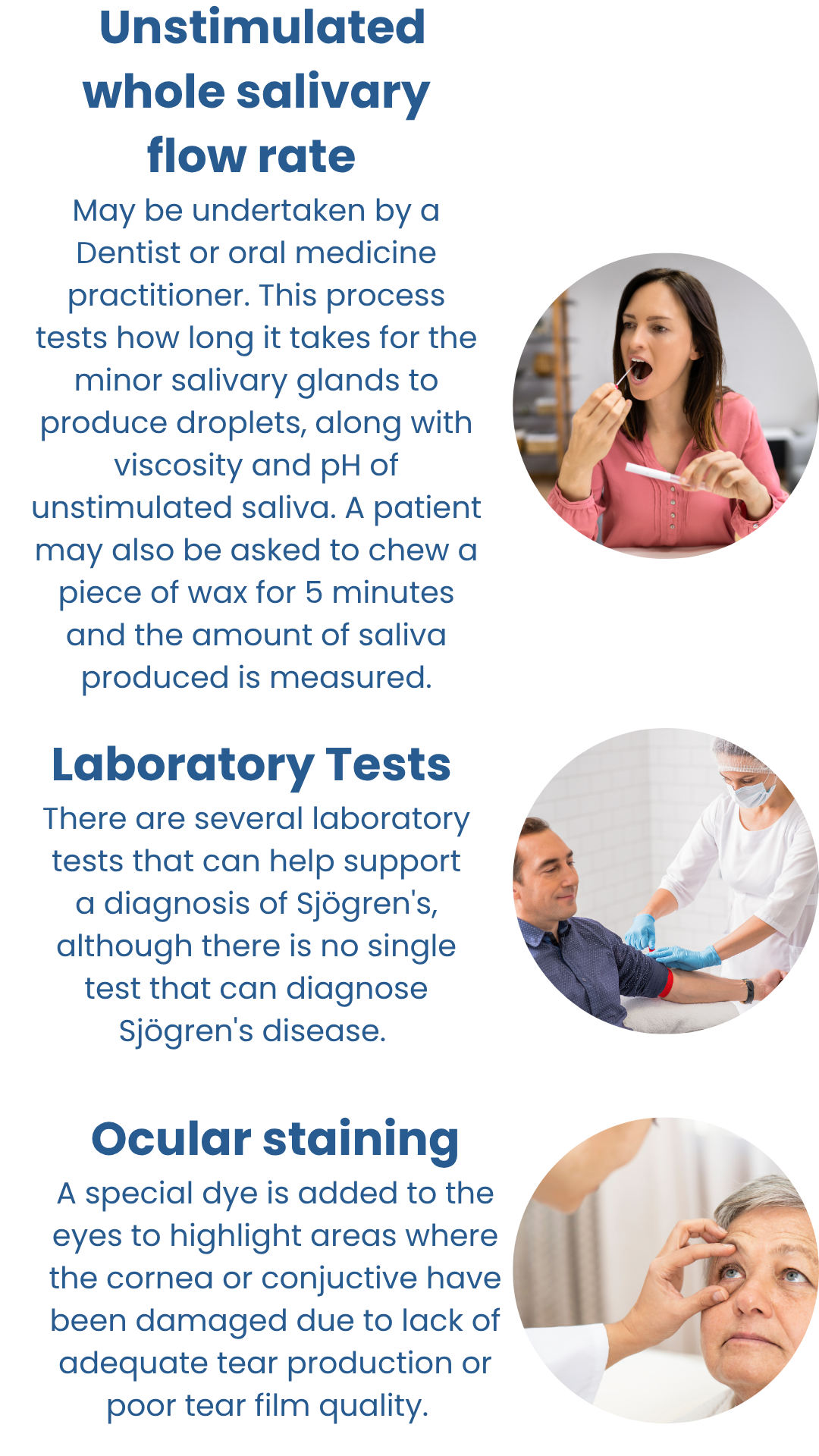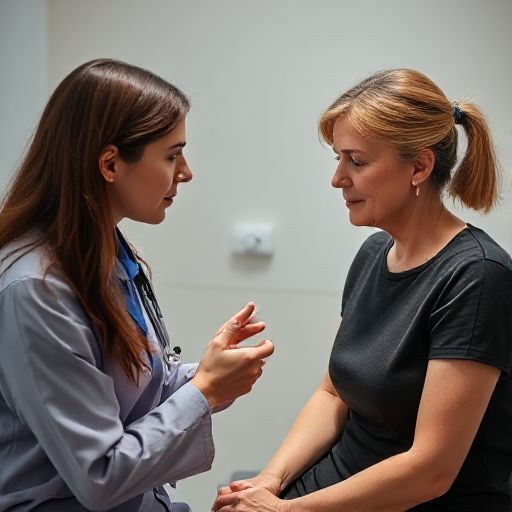Tests
Autoantibodies: ANA, SSA/Anti-Ro, SSB/Anti-LA, CCP, RF, ENA, SSA/Anti-Ro60, SSA/Anti-Ro52, SSB/Anti-La etc. (Note: Titers do not correlate with disease severity.
Inflammatory markers: ESR, CRP
Laboratory tests: CBC with differential and platelets, serum potassium, liver function tests (LFTs)
Urine analysis: UA, random urine protein/Cr ratio
Infectious disease screening: HIV, Hep C
If Antibody-negative: Consider a minor salivary gland biopsy (MSGB), typically performed via rheumatology consult.
Suspect you have Sjögrens disease?
A General Practitioner (GP) will usually be a patients first port of call. It is important the GP has some specific knowledge around the issue of autoimmune diseases. We are currently working to educate practitioners all around Australia on Sjögren's disease.
If the GP suspects something is amiss patients may be referred to a Rheumatologist, an Immunologist, an Ophthalmologist and dental or oral medicine practitioners.
These professionals will then go through a patients history and try to piece together the puzzle that is a diagnoses of Sjögren's disease.






